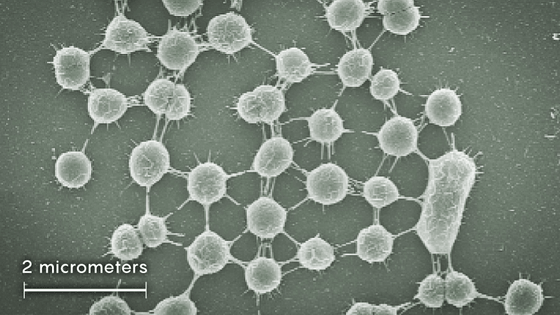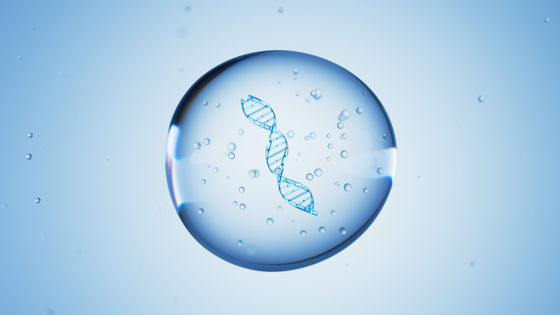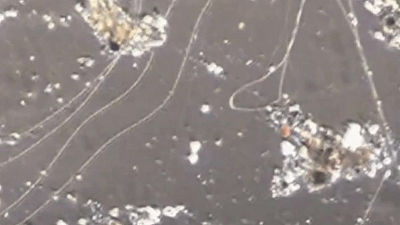It's becoming clear that the ocean is teeming with bacteria interconnected by nanotubes

by
Microbiologists have discovered that single-celled organisms, previously thought to float alone on the waves, sometimes form interspecies networks and build relationships comparable to those of a single multicellular organism. This is beginning to become clear thanks to years of research by Quanta Magazine, a science news site.
The Ocean Teems With Networks of Interconnected Bacteria | Quanta Magazine
https://www.quantamagazine.org/the-ocean-teems-with-networks-of-interconnected-bacteria-20250106/

Scientists once thought of Prochlorococcus as a lonely drifter, but in a May 2024 paper , a team of researchers led by the University of Cordoba in Spain showed that the single-celled organism was capable of living on nanotubes. They announced that they were forming a network.
When María del Carmen Muñoz-Marín, one of the study's authors, looked at Prochlorococcus under a microscope, she found that it was networked not only with other Prochlorococcus bacteria, but also with Synechococcus , another cyanobacterium that often lives in the same environment. They found that the cells were connected to each other, with three to four, and sometimes as many as ten, bridges extending from each cell.
Through a series of dye tests, Muñoz-Marin and his team identified these bridges as 'bacterial nanotubes,' structures made of cell membranes that hold the bridges together. This is the first time that bacterial nanotubes have been identified in cyanobacteria, which share nutrients and other substances between two or more cells.

The discovery that cells form physical networks raises a very fundamental question: should these cyanobacteria be classified as single-celled organisms?
It has been known for some time that bacteria form structures known as
The existence of bacterial nanotubes was first discovered in 2011. Sigal Ben Yehuda and Gyanendra P. Dubey of the Hebrew University of Jerusalem wrote in a paper that Bacillus subtilis is made up of nanotubes. They posted images showing that Bacillus subtilis bacteria share antibiotic resistance genes with each other, and that the nanotubes sometimes connect to other types of cells, such as Staphylococcus aureus and Escherichia coli.

The nanotube-connected cells shared an internal space, more like different rooms of the same house than separate houses with interconnecting passageways.
This discovery surprised biologists at the time and prompted them to reconsider their image of single-celled organisms. Many subsequent studies have revealed that Bacillus subtilis is not the only organism with bacterial nanotubes. It became like that.
However, when Muñoz-Marin and his colleagues saw Prochlorococcus and Synechococcus connected by bacterial nanotubes, they thought something was wrong.
This is because these cyanobacteria live in the harsh environment of the open ocean, and even if they made nanotubes, they would be easily broken by the current of water. Also, cyanobacteria are photosynthetic, so they need the energy they need to survive. We obtain most of our material goods from the sun, so it was hard to imagine the need to create a network to exchange things.
'We spent a lot of time making sure that the tubes in the images were physiological and not artifacts,' said José Manuel García-Fernández, co-author of the study. 'The results we obtained were quite shocking in the field of marine cyanobacteria research, and although we were surprised, we wanted to confirm them completely.'
The research team then conducted further observations using not only the transmission electron microscope used in the initial observations, but also a fluorescence microscope, a scanning electron microscope, and a flow cytometer , which images living cells moving at high speed. did.
They found that about 5% of the cells in the sample were connected by nanotubes, and that the tubes were made of membrane lipids rather than proteins. If they were made of proteins, they would be the flagellar organelles. It was a possibility, but testing revealed that it was indeed a tube.
'Until the early 2000s, when scientists talked about marine phytoplankton, they thought of solitary cells,' García-Fernández said. 'But today we have to take into account that these bacteria are not solitary. 'I was,' he said.
The research team from the University of Cordoba: (left to right): José Antonio González Reyes, Jesús Díez, María del Carmen Muñoz Marín, Elisa Angulo Cánovas, and José Manuel García Fernández.

It's not yet clear why the cyanobacteria drifting across the vast oceans work together, but Christian Kost, a microbial ecologist at Germany's University of Osnabrück who was not directly involved in Muñoz-Marin's research, said: point out that cyanobacterial genomes are unusually small.
According to Coste, the genome of Prochlorococcus is the smallest of any known free-living photosynthetic organism, with only about 1,700 genes. The genome of Synechococcus is similar.
Although a smaller genome size would free bacteria from bulky genes and make them lighter, it would mean they would be unable to produce a wide variety of nutrients and metabolites on their own. They tend to build interdependent communities with creatures that share their needs.
'These communities are much more efficient than bacteria trying to produce all the metabolites themselves,' Kost said. 'But the problem is how to exchange the metabolites.' .
Nanotubes are a potential solution: a tightly connected network of cells that would eliminate the risk of nutrients being washed away into the ocean or stolen by others.

Cost said the paper showing that marine cyanobacteria form networks is intriguing, but noted that more research is needed. One big unsolved question is how to create networks in the natural world. What Chlorococcus and Synechococcus share in common.
These cyanobacteria get their energy from sunlight, but they must get nutrients such as nitrogen and phosphorus from outside, so researchers are undertaking experiments to track the flow of these nutrients.
It also remains a mystery as to what conditions the bacteria need to form nanotubes, and Muñoz-Marin and his colleagues are interested in the density of bacteria needed to form a network.
'The fact that physical communication exists between different types of organisms is a testament to the fact that there is a lot of communication between marine cyanobacteria,' Garcia-Fernandez said, reflecting on how research into communication between marine cyanobacteria has changed dramatically in the last quarter century. 'I think it's going to change a lot of the way we think about how cells work in the brain.'
Related Posts:







